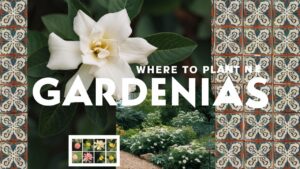This guide will explore an array of stunning wildflowers that thrive when planted in the spring, giving you insights on their beauty, care, and ecological benefits.
Poppies

Poppies, with their breathtakingly vibrant petals, are among the first flowers to bloom in spring. These hardy annuals add a splash of color to any garden, making them a favorite for bunches and borders alike. The vivid red of the common poppy attracts pollinators like bees and butterflies, enhancing biodiversity. Poppies thrive best in well-drained soil and full sun, which not only promotes their growth but also produces the most spectacular blooms.
Growing poppies requires little effort; simply scatter the seeds in early spring or fall, and you’ll be rewarded with a beautiful display in no time. Remember, these flowers prefer a bit of neglect, so avoid over-watering. By choosing poppies for your garden, you’re not just planting flowers; you’re also supporting a habitat for local wildlife.
Cosmos
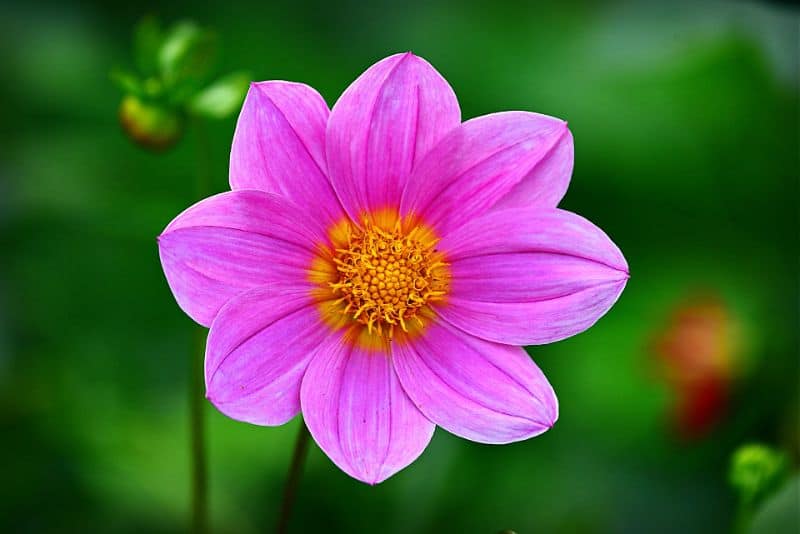
Another delightful spring bloom is the cosmos, known for its airy petals and feathery foliage. This annual flower comes in a variety of colors, including pink, white, and orange, making it an eye-catching addition to any garden. Cosmos are incredibly easy to grow; they thrive in poor soil and can endure drought conditions, making them a practical choice for many gardeners.
Plant cosmos seeds directly in the ground after the last frost, and watch as they reach heights of up to four feet, swaying gently in the breeze. Not only do they bloom beautifully, but they also attract beneficial insects, including pollinators like butterflies and bees, which will help keep your garden flourishing all season long.
Penstemons
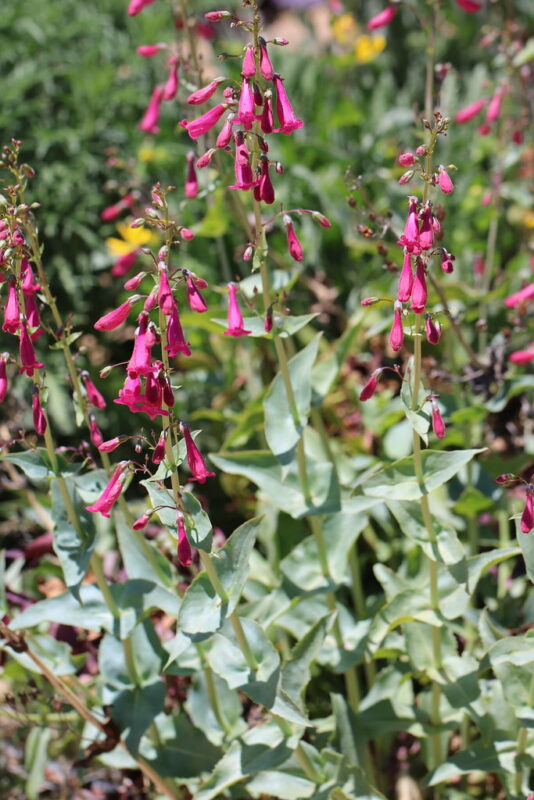
If you’re looking to add a splash of color and a bit of height to your garden, consider planting penstemons. These perennial wildflowers feature tubular blooms in a variety of hues, such as red, purple, and pink, making them a striking choice. They thrive in well-drained soil and full sun, and once established, they can withstand drought conditions.
Penstemons are also known for their ability to attract hummingbirds, which are drawn to their tubular flowers. When planting penstemons, you’ll create a lively space buzzing with activity, as these charming birds flit from flower to flower.
Yarrow

Yarrow is a robust and versatile perennial that boasts clusters of tiny flowers resembling flat-topped umbrellas in shades of yellow, white, or pink. Known for its resilience, yarrow grows well in poor soils and is drought-tolerant, making it an excellent choice for low-maintenance gardens.
Beyond its beauty, yarrow possesses medicinal qualities and has been used for centuries for various ailments. When planting it in your garden, you’re not only adding visual interest but also inviting butterflies and other pollinators that are attracted to its nectar-rich blooms.
Columbines
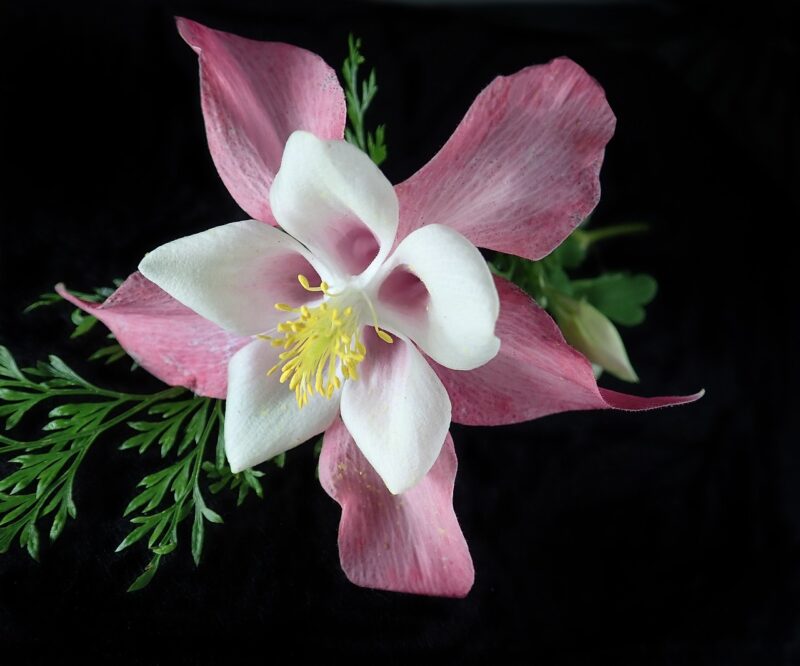
Columbines are enchanting spring wildflowers known for their unique, bell-shaped blooms and stunning color combinations, including shades of blue, purple, red, and yellow. These perennial flowers grace gardens with their delicate appearance and are easy to grow from seeds or nursery plants.
Columbines prefer partially shaded areas with well-drained soil, making them ideal for woodland gardens or as companions for taller plants. Not only do they attract bees and hummingbirds, but their lovely foliage also adds texture, enhancing the overall charm of the garden.
Coreopsis
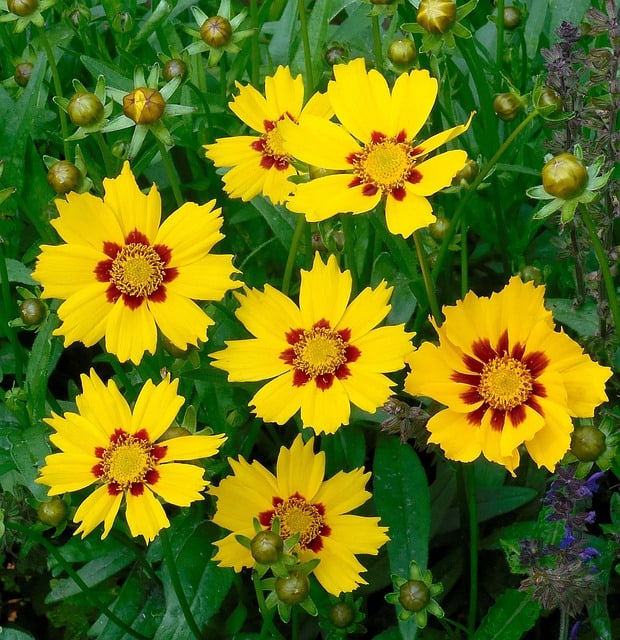
Often called tickseed, coreopsis is an abundant wildflower that brings a sunny disposition to spring gardens with its cheerful yellow and orange flowers. These perennials are drought-tolerant and thrive in a range of soil types, from sandy to clay, making them incredibly adaptable.
Coreopsis blooms for a long season and is known to attract various pollinators. With minimal care, including deadheading spent blooms to encourage further flowering, coreopsis can create vibrant swathes of color, making them a favorite for anyone looking to brighten their outdoor spaces.
Coneflowers
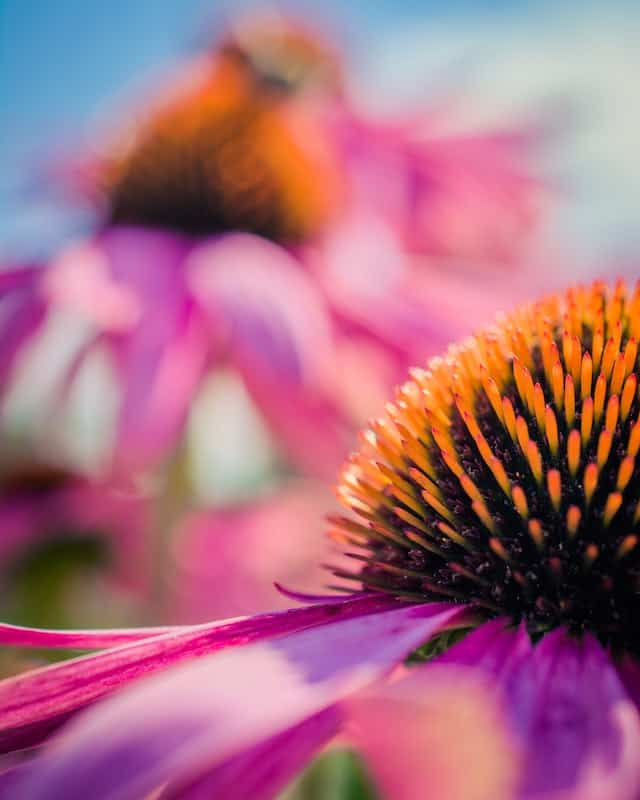
Coneflowers, particularly the purple coneflower (Echinacea purpurea), are beloved for their striking appearance and numerous benefits. These perennials showcase large, daisy-like flowers with prominent, spiky centers. Growing in various colors, including pink, white, and orange, coneflowers are resilient and thrive in full sun.
One of the most appealing aspects of coneflowers is their ability to attract butterflies and bees, which are essential for garden health. Additionally, coneflowers have medicinal properties; they have been used traditionally for their immune-boosting benefits, making them a great addition to any garden focused on sustainability and health.
Wallflowers
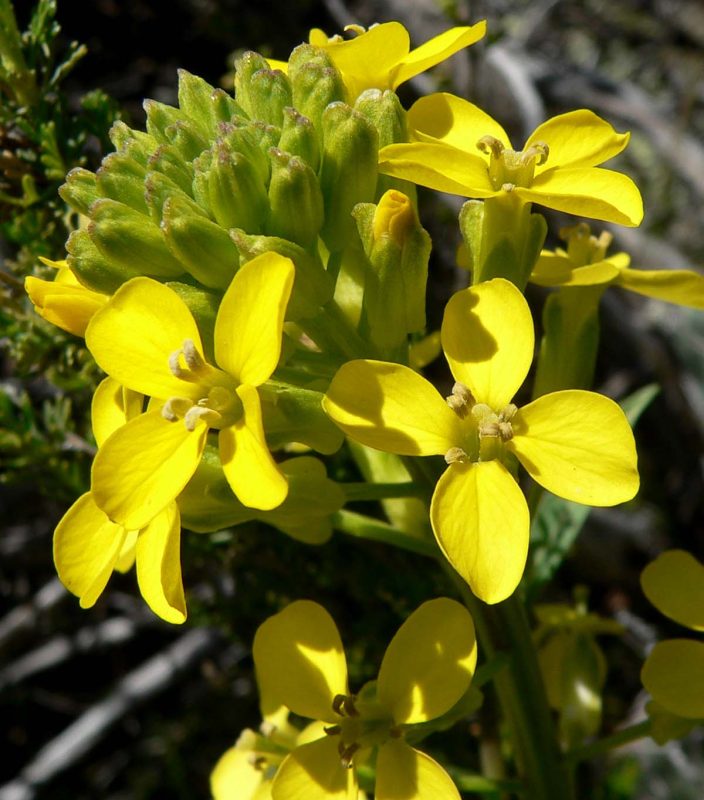
Wallflowers, particularly those belonging to the Erysimum genus, are vibrant and hardy biennials that fill spaces with color when planted in spring. Their dense clusters of fragrant blossoms in shades of yellow, orange, and purple are delightful to the senses and can attract a variety of pollinators.
Ideal for cottage gardens or as border plants, wallflowers thrive in well-drained soil and prefer full sun to partial shade. They not only bring a splash of color but also create an inviting atmosphere for beneficial insects, making your garden alive and buzzing.
Lupines

Lupines are striking perennials known for their tall, spiky flower clusters that resemble colorful candles. Available in shades of blue, purple, pink, and white, these wildflowers are perfect for adding vertical interest to your garden. Lupines thrive in well-drained soil and full sun, although they appreciate some afternoon shade in hotter climates.
These nitrogen-fixing plants enrich the soil, making them valuable allies for sustainable gardening practices. By incorporating lupines, you’ll enhance not only the beauty of your space but also the health of your soil, contributing to the vitality of your garden ecosystem.
Clarkia
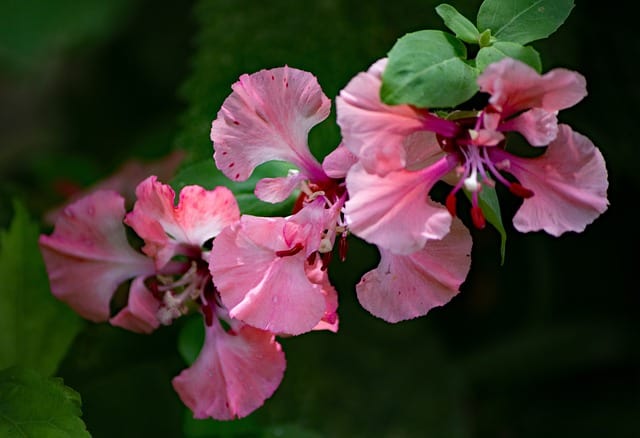
Clarkia, also known as godetia, is a charming annual wildflower known for its delicate, cup-shaped blooms. It comes in an array of colors, ranging from pastel pinks and whites to vibrant reds and purples. These flowers thrive in full sun and well-draining soil, making them suitable for gardens, borders, and containers.
Planting Clarkia is straightforward; simply sprinkle the seeds in early spring. As they bloom, they create soft, romantic landscapes that attract bees and butterflies, drawing nature closer to your space and providing a visual feast throughout the spring and into summer.
California Bluebells

California bluebells (Phacelia campanularia) are a lovely addition to any spring garden, known for their bell-shaped, deep blue flowers that sway gracefully in the breeze. These annual wildflowers thrive in poor, well-drained soils and full sun, making them a great fit for dry gardens and meadows.
They are particularly drought-resistant, allowing gardeners to enjoy vibrant color even in arid conditions. Additionally, California bluebells are known to attract a variety of beneficial pollinators, enhancing the biodiversity of your outdoor space and creating a lively, thriving ecosystem.
Larkspur
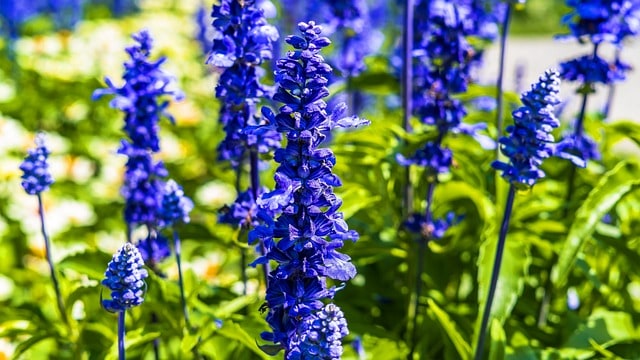
Larkspur is a tall perennial known for its striking spikes of blue, purple, and white flowers. Perfect for creating a dramatic backdrop in the garden, larkspur thrives in well-drained soil and full sun to partial shade. It’s suitable for planting in borders or as a cut flower in floral arrangements.
These wildflowers can grow quite tall, sometimes reaching five feet, providing a stunning vertical element to gardens. Larkspur is also a magnet for bees, butterflies, and hummingbirds, ensuring that your garden flourishes with life throughout the blooming period.
Butterfly Milkweed
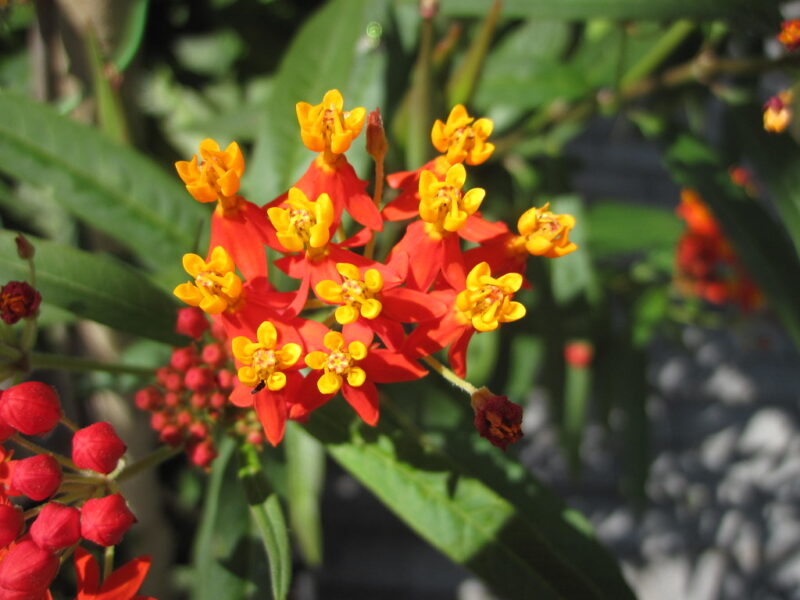
Butterfly milkweed (Asclepias tuberosa) is not just a beautiful addition to any garden—it’s also a host plant for monarch butterflies. Known for its striking orange and yellow blooms, this perennial wildflower thrives in well-drained soil and full sun.
In addition to attracting butterflies, butterfly milkweed is drought-tolerant and has a long blooming season, which adds continuous color to your spring landscape. Its deep taproot also helps it survive in challenging conditions, making it a resilient choice for sustainable gardening.
Blanket Flower
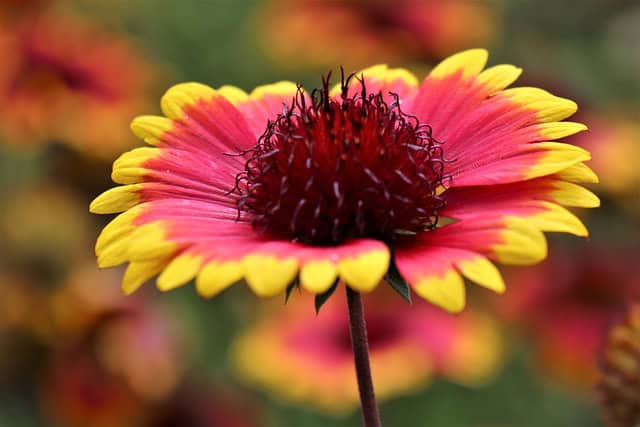
The blanket flower (Gaillardia), with its fiery, vibrant petals that resemble the colors of a sunset, is a stunning addition to any garden. These perennial wildflowers bloom abundantly throughout the summer, producing flowers in shades of red, orange, and yellow, often with contrasting centers.
Blanket flowers thrive in well-draining soil and appreciate hot, sunny conditions. They’re also drought-resistant and are known to attract a wide array of pollinators, making them a fantastic choice for gardeners who want to support local wildlife while enjoying beautiful, long-lasting blooms.
Evening Primrose
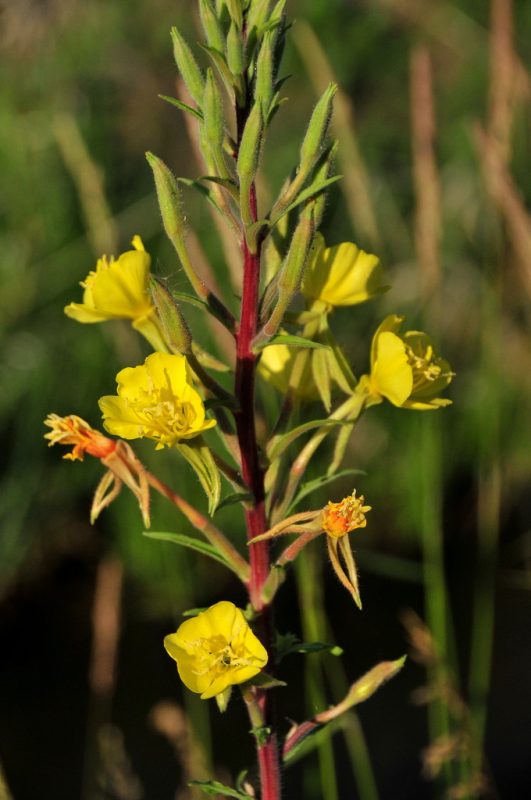
Evening primrose is a captivating wildflower that truly earns its name. The flowers open in the late afternoon and emit a delightful fragrance that attracts nocturnal pollinators like moths. These biennial plants produce bright yellow blooms that bring a cheerful glow to garden spaces.
Evening primrose thrives in well-drained soils and can tolerate a variety of conditions, making them resilient additions to wildflower gardens. Once established, they require minimal maintenance and bloom throughout the summer, ensuring their beauty persists throughout the growing season.
Lacy Phacelia
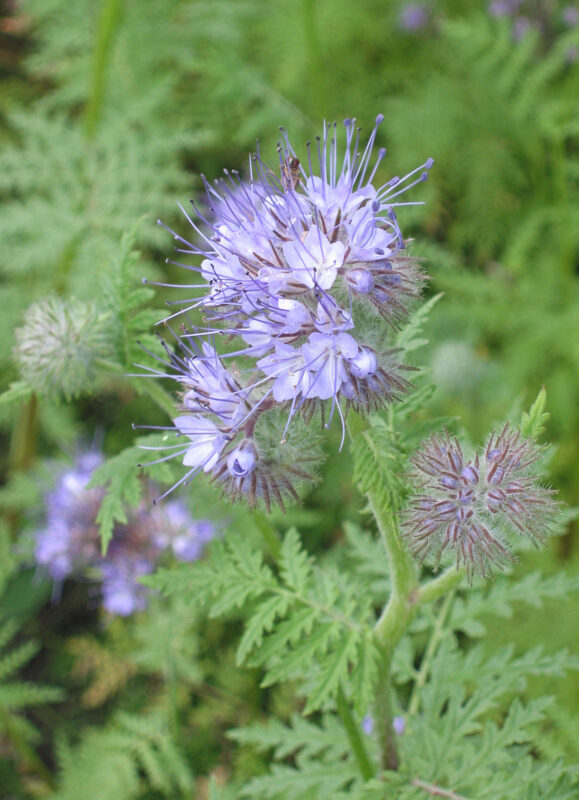
Lacy phacelia (Phacelia tanacetifolia) is often sought after for its unique, fern-like foliage and lavender-blue flowers that bloom profusely throughout the spring. These annual wildflowers are known for attracting a plethora of pollinators, including bees, butterflies, and even beneficial insects, making them an essential part of any wildlife garden.
Lacy phacelia performs best in well-drained soils and full sun. It also acts as a green manure crop, enriching the soil when tilled back in. This aspect of phacelia makes it a smart choice for those pursuing sustainable gardening practices.
Baby Blue Eyes
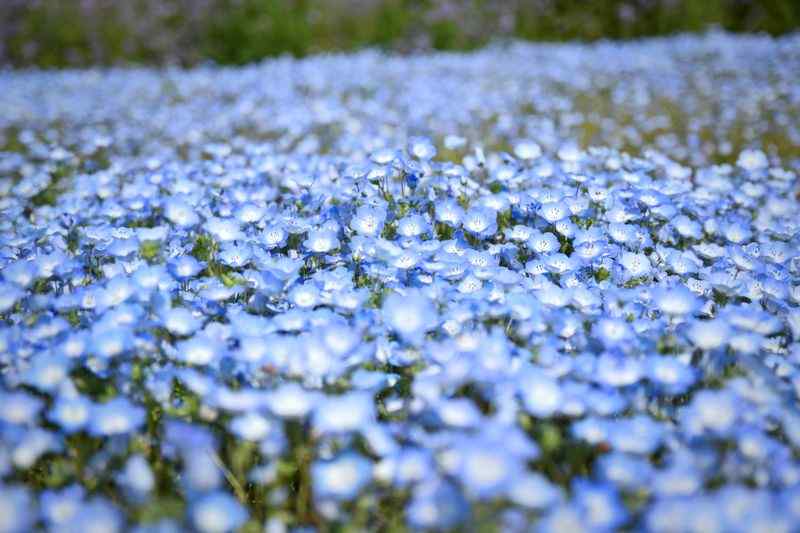
Baby blue eyes (Nemophila menziesii) are delicate annual wildflowers that introduce a soft, pastel touch to spring gardens. Their charming, bright blue flowers are complemented by pure white eyes, creating a delightful contrast. These low-growing plants make wonderful ground covers or look fantastic in containers.
These tiny blooms thrive in well-drained soil and prefer cool, damp conditions, making them ideal for shady spots in your garden. Baby blue eyes are easy to germinate from seeds, and their ability to tolerate a range of conditions makes them a charming addition to any garden design.
Black-Eyed Susan
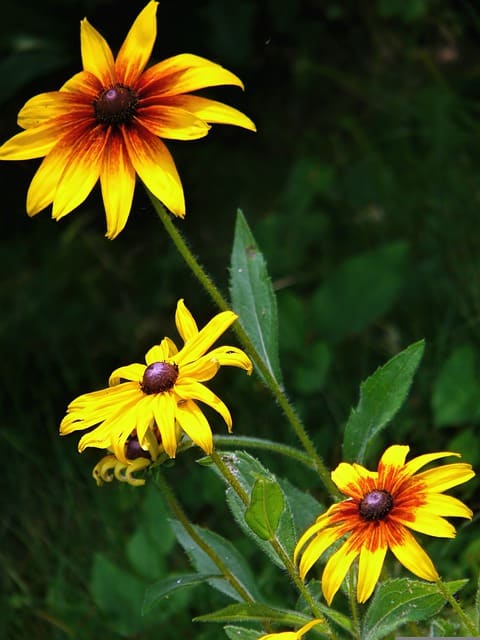
Black-eyed Susans (Rudbeckia hirta) are perennial wildflowers with distinct yellow petals surrounding a dark chocolate-brown cone at their center. These popular blooms are not only beautiful but also attract various pollinators, contributing to a biodiverse ecosystem.
These hardy plants thrive in full sun and adapt well to various soil types, making them easy for any gardener to grow. Black-eyed Susans bloom all summer long, providing a reliable burst of color that complements a wide range of garden styles.
Sunflower
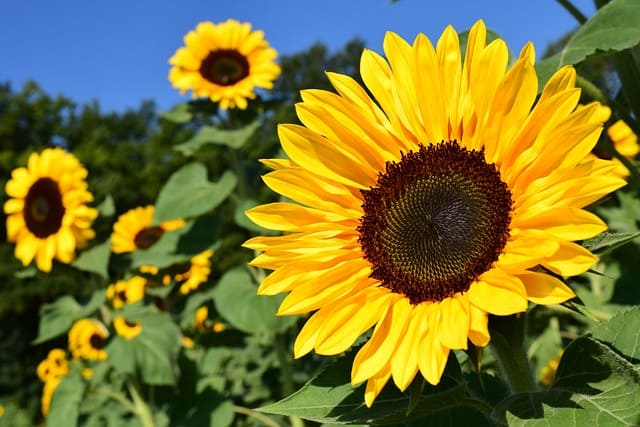
Sunflowers (Helianthus annuus) are perhaps one of the most iconic wildflowers, recognized for their tall stature and massive, cheerful yellow blooms. These annuals bring an unmistakable vibrancy to any garden and are known to attract birds, bees, and butterflies.
Sunflowers thrive in well-drained soil and full sun, requiring minimal maintenance once established. When grown in groups, they can create breathtaking, towering displays that beckon wildlife and create an inviting space for visitors to admire.
Rose Verbena
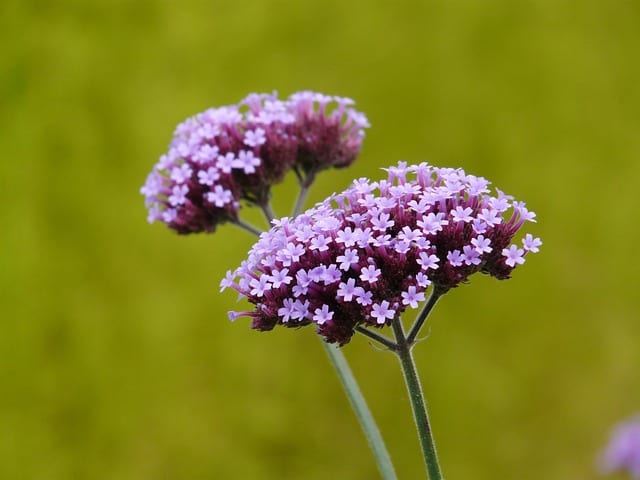
Rose verbena (Glandularia spp.) is a delightful perennial wildflower characterized by its clusters of vibrant flowers in purples, pinks, and whites. Known for its trailblazing growth habit, rose verbena makes an excellent choice for hanging baskets, borders, or as ground cover.
This resilient plant thrives in full sun and can tolerate drought conditions, making it an ideal addition for water-wise gardens. With its nectar-rich blooms, rose verbena attracts bees and butterflies, creating a lively atmosphere in your outdoor space.
Wild Geranium
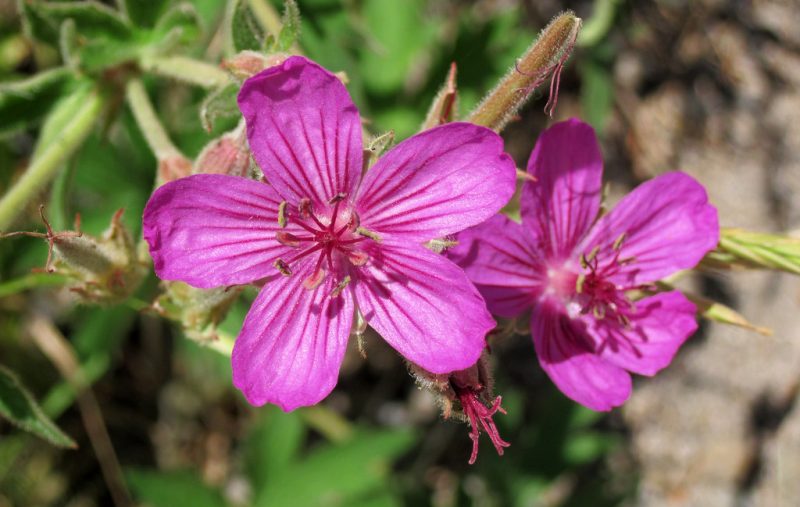
Wild geranium (Geranium maculatum) is a charming perennial wildflower with striking purple flowers and attractive foliage. These elegant plants thrive in part shade to full sun and are often found in woodland edges, making them perfect for shaded garden areas.
Wild geraniums have a long blooming season, and their flowers’ delicate beauty enhances any landscape. They also attract pollinators, contributing to a rich garden ecosystem, while their foliage provides excellent ground cover, helping suppress weeds.
Phlox
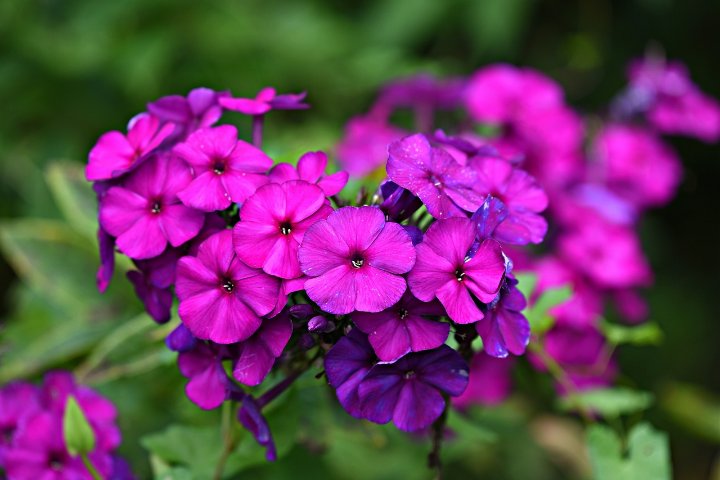
Phlox is a delightful perennial wildflower ranging from creeping varieties to tall garden types. Known for its fragrant, colorful clusters of blooms, phlox displays hues of pink, purple, white, and red, enhancing the garden’s visual appeal.
These flowers thrive in well-drained soil and prefer full sun to partial shade. Phlox attracts various pollinators, including butterflies and hummingbirds, providing both beauty and ecological benefits to your garden.
Bachelor’s Buttons
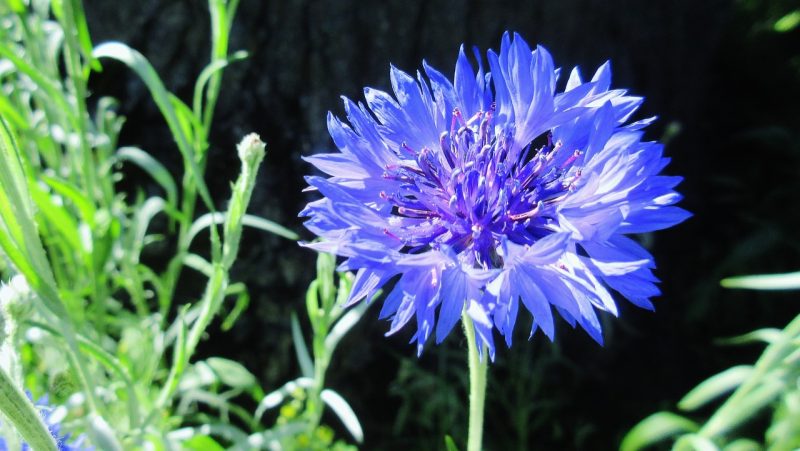
Bachelor’s buttons (Centaurea cyanus) are cheerful annual wildflowers appreciated for their bright blue, pink, and white petals. Often found in vintage gardens and meadows, they are a symbol of summer and a favorite among flower enthusiasts.
These resilient plants thrive in a range of soil types and full sun, making them suitable for various garden settings. Bachelor’s buttons are also beneficial for pollinators and are excellent for cutting gardens, providing long-lasting blooms in floral arrangements.
Blue Flax

Blue flax (Linum perenne) is a striking perennial wildflower known for its stunning, delicate light blue flowers. These blooms open in the morning and close in the afternoon, creating a gentle rhythm in the garden during the peak of spring.
Blue flax thrives in dry, well-drained soils and prefers sunny locations, making it suitable for prairies and rock gardens. This hardy plant is drought-tolerant and attracts butterflies and bees, contributing to a vibrant garden ecosystem.
Anemones
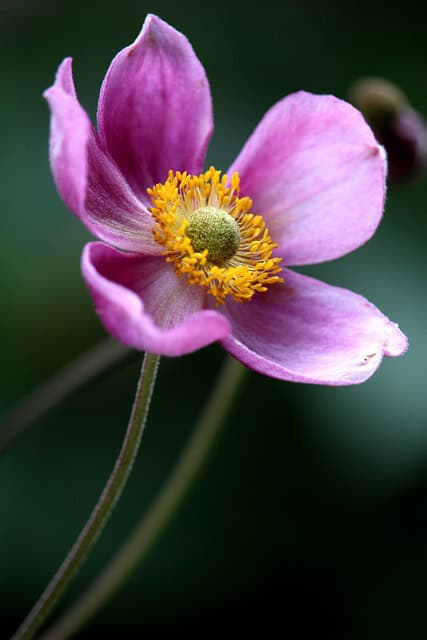
Anemones are captivating spring wildflowers that display a burst of colors, from pure white to shades of red, pink, and blue. These perennials create an ethereal charm in any garden, thanks to their delicate flowers.
Anemones thrive in well-drained, humus-rich soil and prefer partial shade to full sun. They add a unique visual appeal and are known to attract pollinators, enhancing the biodiversity of your outdoor spaces while offering a stunning seasonal display.
Shasta Daisy
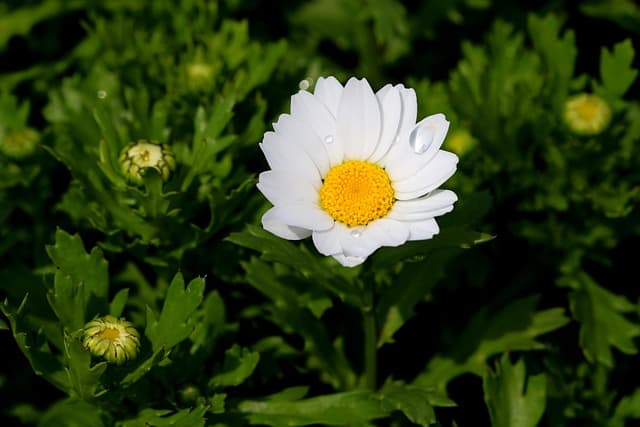
The Shasta daisy (Leucanthemum × superbum) is a classic wildflower that radiates cheerful simplicity with its white petals and yellow centers. These perennials bloom from early summer to fall, adding a timeless beauty to any garden.
Shasta daisies thrive in full sun and well-drained soils, requiring minimal maintenance. They attract various pollinators such as bees and butterflies, and their sturdy nature makes them excellent for borders, cottage gardens, and as cut flowers in arrangements.
Hollyhocks
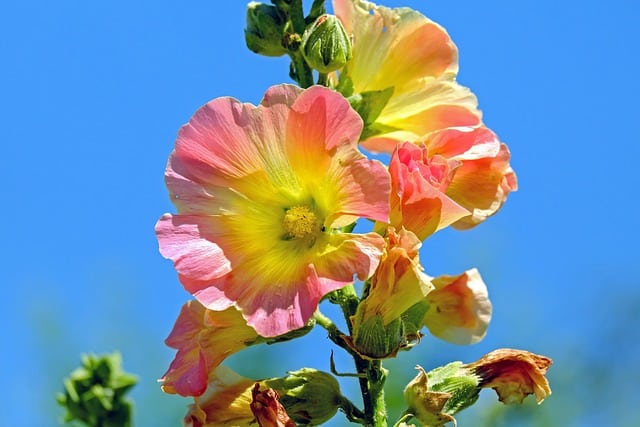
Hollyhocks (Alcea rosea) are majestic biennials that tower over the garden with their tall spikes adorned with large, colorful flowers. Available in hues of pink, purple, yellow, and white, hollyhocks can create stunning visual impact in any landscape.
These plants thrive in full sun and well-drained soils, requiring some support as they grow. Hollyhocks attract beneficial insects and provide important nectar sources during their blooming period, making them valuable for maintaining biodiversity.
Forget-me-not
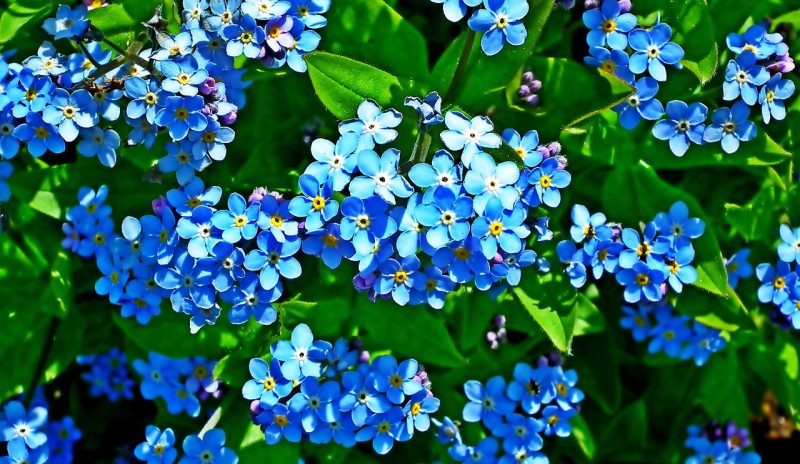
Forget-me-nots (Myosotis spp.) are enchanting little wildflowers with bright blue flowers and a yellow center, often associated with memories and love. These annuals are perfect for adding a touch of nostalgia to cottage gardens and shaded areas.
They thrive in moist, well-drained soils and prefer partial sunlight. Once they bloom, forget-me-nots create charming carpets of color, attracting bees and butterflies to their delicate flowers. Their long-lasting appeal makes them a must-have for spring planting.
Cottage Pinks
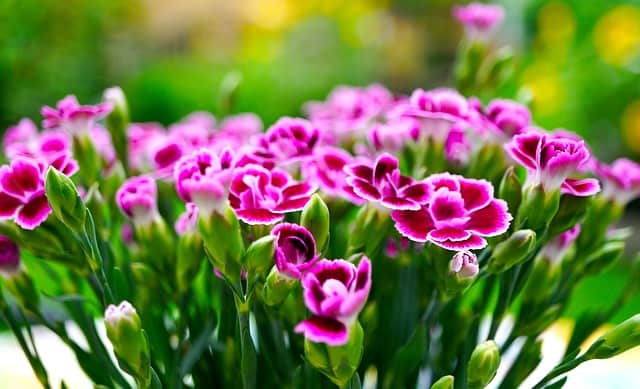
Cottage pinks (Dianthus plumarius) are beloved perennials that bring delightful fragrance and beautiful blooms to gardens. Known for their frilled, colorful petals in shades of pink, red, and white, these low-growing flowers make lovely borders and ground cover.
Cottage pinks prefer well-draining soil and full sun, thriving in various garden settings. Their sweet scent and nectar-rich blooms draw in bees and butterflies, contributing to the garden’s ecology while providing visual charm.
Lobelia
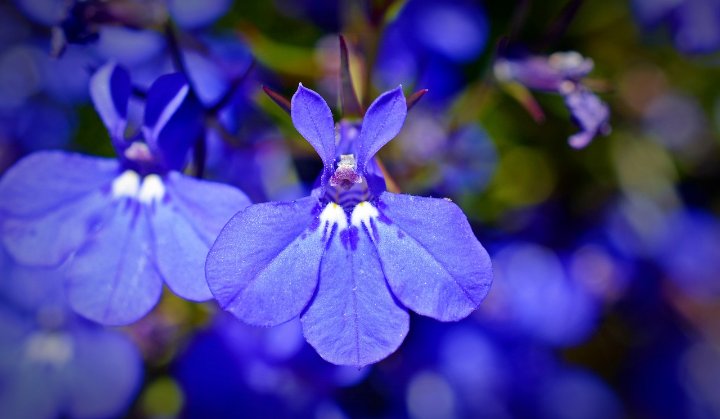
Lobelia is a versatile wildflower that flourishes in a range of colors, including blue, purple, and white. These annuals can add a brilliant pop of color to hanging baskets, borders, or even as ground cover.
Preferably growing in rich, moist soil and partial shade, lobelia can create stunning contrasts alongside taller plants. Their nectar-rich blooms attract bees and hummingbirds, ensuring your garden is alive with activity throughout the blooming season.
Snapdragon
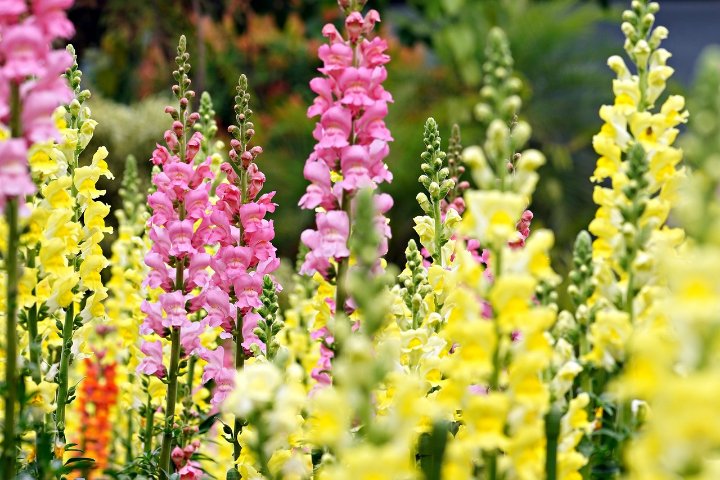
Snapdragons (Antirrhinum majus) are classic garden flowers celebrated for their unique shape and delightful colors ranging from pastels to bright, bold hues. These annuals often bring height and variety to flower beds and arrangements.
Snapdragons prefer well-drained soil and enjoy full sun to partial shade. They are known to attract hummingbirds and bees, making them a wonderful choice for friendly ecosystems while providing delightful visual interest.





